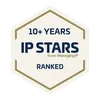Companies have used data analytics to drive many aspects of their patent strategy.
#
Patent landscaping can be used to identify gaps in the market where a new entrant may obtain significant patent protection. Additionally, competitor analysis can highlight increases in patent activity in new sectors and markets, or highlight withdrawals and abandonments indicative of a competitor’s change in commercial focus.
Using data when prosecuting patent applications#
Proprietary tools can also be used to indicate the strength and value of individual patent rights, or a portfolio as a whole. However, despite these developments, one area where data has been historically underused is in the prosecution of patent applications themselves. Ask any European patent attorney, and they will be able to regale you with anecdotes about an ‘impossible examiner’, as well as other applications where the journey to grant was perhaps smoother than expected. Much like patent applications, every examiner is different.
Despite this fact, historically, there has been little consideration of the propensities of the examiner by patent attorneys or applicants. Often the view is that, as the examiner cannot be changed, you should make the best of the situation at hand. However, the use of data during prosecution can improve the chances of progressing an application to grant, especially in the most difficult cases.
How to use data in patent prosecution#
Firstly, data can be used to provide an informed view of the challenge presented by any one examiner. Data can be used to compare an examiner’s grant rate to others within their IPC sector. In this way, taken alongside the application’s content and the known prior art, a picture of the potential progression of examination can begin to emerge. Accordingly, if progressing the application looks potentially challenging, the applicant can be advised that there is a reasonable chance that an appeal may be required before any grant, for example.
Beyond this, it is also possible to study the outcome of oral proceedings for cases handled by any one examiner. Oral proceedings in examination can come at a significant cost, so applicants are always keen to determine the chances of a successful outcome and patent grant. Data-driven prosecution strategies consider the result of previous examination oral proceedings in cases handled by the examiner in question. Subsequently, this data can be used to advise if attending oral proceedings is likely to be successful, or if moving to appeal or the filing of a divisional patent application may be preferred.
An advanced data-driven approach to patent prosecution#
A further, more advanced, data-driven approach can also be employed when responding to specific objections raised by an examiner. The historic objections raised by each examiner are publically available, as are the responses to each of those objections. This data can be interrogated to determine which arguments are the most successful in persuading specific examiners to withdraw each kind of objection. Using such a data-driven approach in response to the objections raised by an examiner can be very powerful in progressing applications and achieving grant, even in the most challenging cases.
Adopting and embracing a data-driven approach allows applicants to optimise the prosecution of their patent applications, increasing the chance of success and ensuring the effective targeting of resources throughout the application process.
If you would like more information, please contact us.





















